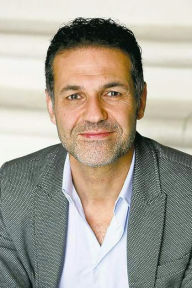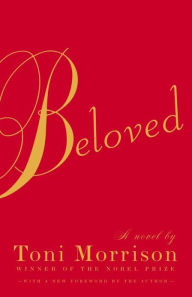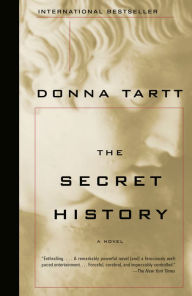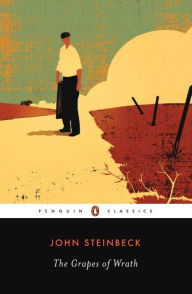From the Publisher
A Thousand Splendid Suns is an ambitious work. Once again the setting is Afghanistan, but this time [Hosseini] has taken the last 33 years of that country’s tumultuous history of war and oppression and told it on an intimate scale, through the lives of two women.”—The New York Times “Spectacular. . . . Hosseini’s writing makes our hearts ache, our stomachs clench and our emotions reel. . . . Hosseini mixes the experiences of these women with imagined scenarios to create a fascinating microcosm of Afghan family life. He shows us the interior lives of the anonymous women living beneath identity-diminishing burqas... Hosseini writes in gorgeous and stirring language of the natural beauty and colorful cultural heritage of his native Afghanistan. . . . Hosseini tells this saddest of stories in achingly beautiful prose through stunningly heroic characters whose spirits somehow grasp the dimmest rays of hope.”—USA Today
“Just as good, if not better, than Hosseini’s best-selling first book, The Kite Runner”—Newsweek
“Compelling”—New York Magazine
“Hosseini revisits Afghanistan for a compelling story that gives voice to the agonies and hopes of another group of innocents caught up in a war. . . . Mesmerizing . . . A Thousand Splendid Suns is the painful, and at times violent, yet ultimately hopeful story of two women’s inner lives. Hosseini’s bewitching narrative captures the intimate details of life in a world where it’s a struggle to survive, skillfully inserting this human story into the larger backdrop of recent history.”—San Francisco Chronicle
“Hosseini . . . has followed his debut novel with another work of strong storytelling and engaging characters. . . . The story pulses with life. . . . Khaled Hosseini is simply a marvelously moving storyteller.”—San Jose Mercury News
“Hosseini’s story . . . rings true as a universal story about victims of cruelty and those who lack the most fundamental of human rights. . . . Hosseini’s work is uplifting, enlightening, universal. The author’s love for his characters and for his country is palpable. In the end, A Thousand Splendid Suns is a love letter to a country and to a people. It is a celebration of endurance and survival in the face of unspeakable tragedy. This is a love song to anyone who has ever had a broken heart and to anyone who has ever felt powerless and yet still dares to dream. And yes, Hosseini has done it again.”—Fort Worth Star-Telegram
“The novel is beautifully written with descriptive details that will haunt you long after you finish reading it.”—Dallas Morning News
“This [novel] tells the startling story of domestic adversaries who discover that survival in a horrific world is nearly impossible without compassion, love and solidarity. . . Hosseini’s prose . . . can stun a reader with its powerful, haunting images.”—Atlanta Journal-Constitution
“Absolutely compelling on every level. It’s nearly impossible for a novel—a work of fantasy and fabrication—to deliver a formidable blow, a pounding of the senses, a reeling so staggering that we are convinced the characters and their dilemmas are genuine. Such a persuasion is particularly difficult when the setting is Afghanistan, a country and culture many see as too strange for recognition, for empathy. But that’s what Khaled Hosseini does again and again with A Thousand Splendid Suns.”—Chicago Sun-Times
“Hosseini has the storytelling gift . . . [A Thousand Splendid Suns] offers us the sweep of historic upheavals narrated with the intimacy of family and village life. . . . What keeps this novel vivid and compelling are Hosseini’s eye for the textures of daily life and his ability to portray a full range of human emotions, from the smoldering rage of an abused wife to the early flutters of maternal love when a woman discovers she is carrying a baby. . . . Hosseini’s illuminating book [is] a worthy sequel to The Kite Runner.”—Los Angeles Times
“Many of us learned much from The Kite Runner. There is much more to be learned from A Thousand Splendid Suns . . . a brave, honorable, big-hearted book”—The Washington Post Book World
“The author’s fans won’t be disappointed with A Thousand Splendid Suns—if anything, this book shows at even better advantage Hosseini’s storytelling gifts.”—New York Daily News
“Hosseini has created two enormously winning female characters in Mariam and Laila, Afghan women born into very different circumstances but who have the same problems.”—Minneapolis Star-Tribune
“[Hosseini] is a writer of unique sensitivities. . . . Hosseini embraces an old-fashioned storytelling unconcerned with literary hipness, unafraid of sentimentality, unworried about the sort of Dickensian coincidences that most contemporary American writers consider off-limits. . . . We are lucky . . . to have a writer of Hosseini’s storytelling ambitions interpreting his culture and history for us with another large-hearted novel. . . . Despite the unjust cruelties of our world, the heroines of A Thousand Splendid Suns do endure, both on the page and in our imagination.”—Miami Herald



















